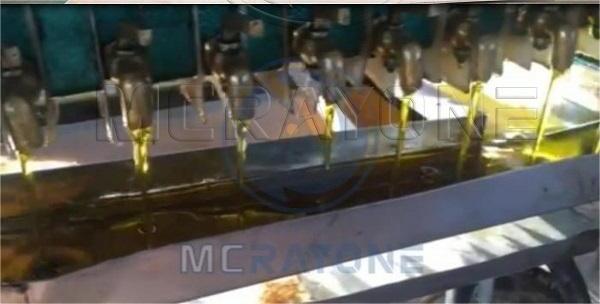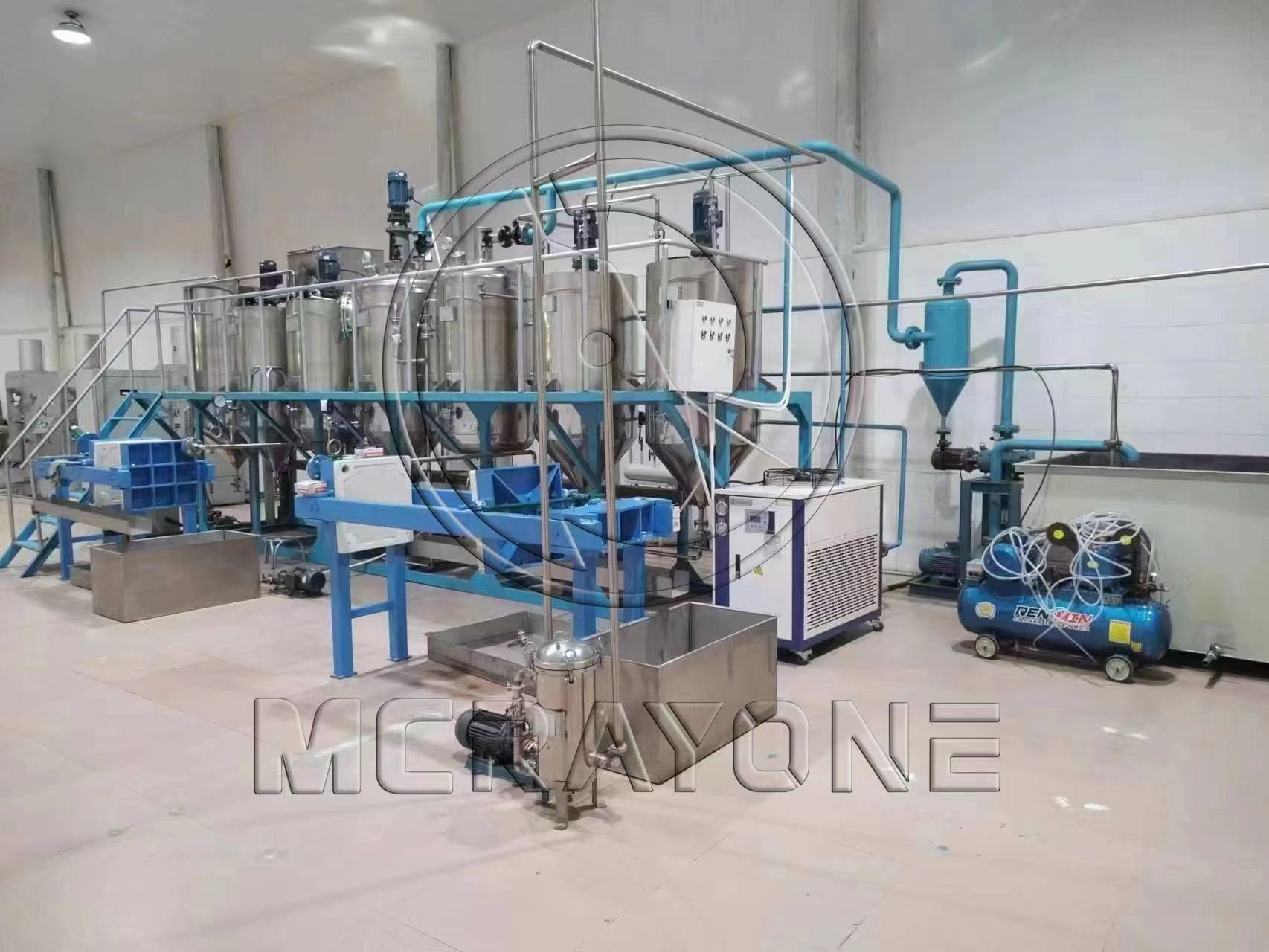The oil content of sesame is between 40% and 58%. Sesame oil is pressed from sesame and has a special fragrance, so it is called sesame oil. Its protein content is also quite high, generally 23% to 26%. The state attaches special importance to the quality and safety of sesame oil, and the new national standard for sesame oil has passed the assessment on November 22, 2016. The new standard recommends that manufacturers implement the principle of "moderate processing" to avoid the carcinogen benzopyrene from "roasted" sesame seeds.
The first-class mechanism sesame oil is often produced by the "hot frying-pressing-fine filtration method". The oil has a significant aroma of sesame oil, and its use is the same as that of small ground sesame oil. Due to the high oil content of sesame seeds, hydraulic presses or screw mechanisms are generally used to press sesame oil in industrial production. Since sesame crude oil contains about 1% natural antioxidants such as sesamol, sesamolin, and sesamin, the shelf life of sesame oil is very long.
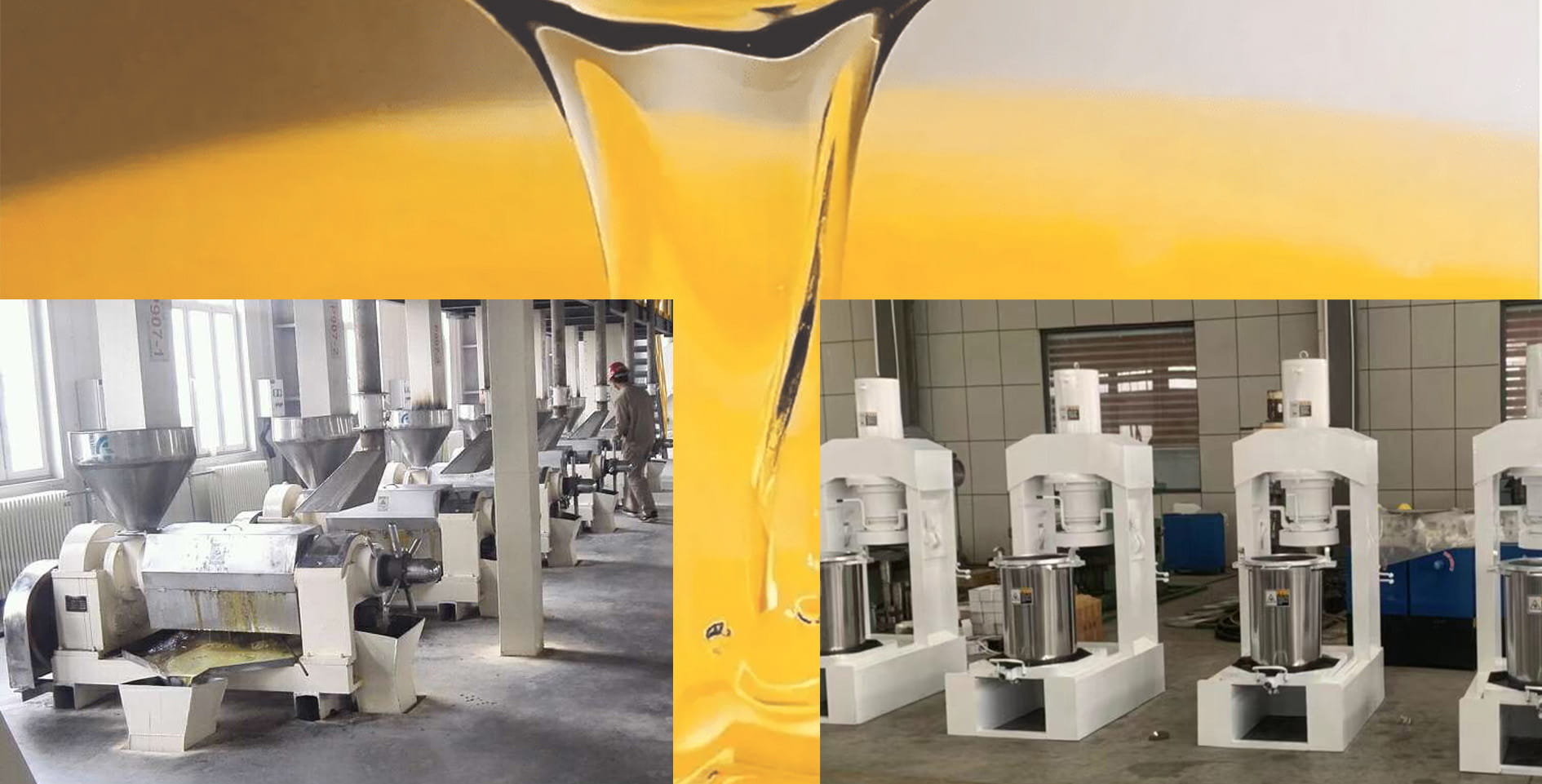
Basic Process:
Sesame→screening→fried seeds→smoking→blowing→pressing→crude oil→sedimentation and filtration→sesame oil
Cleaning: The purpose of cleaning is to remove impurities and immature seeds;
Stir-fried seeds: When frying sesame seeds, mastering the heat, time and temperature are very important. At the beginning, due to the high water content of sesame, it is advisable to stir-fry in a hurry; when the degree of frying reaches 70%, reduce the firepower and check the tenderness of sesame at any time. Generally, it is advisable to make the temperature reach about 200°C. Cooked sesame seeds can be twisted by hand and turn red or yellowish brown. When frying the ingredients, turn them frequently so that the moisture and smoke can easily dissipate, so as to prevent scorching and uneven cooking.
Raising smoke: When the sesame seeds are out of the pot, although water is poured to cool them down, the temperature is still around 140°C to 150°C. If the sesame seeds are not cooled, there is still the possibility of burnt, so heat should be removed from the pot immediately after being out of the pot. Hence the name "Yangyan". The smoke raising operation can be carried out with a smoke raising machine, and small oil factories usually use manual smoke raising operations.
Blowing off: During the frying process, the sesame skin is easy to fall off, and some fried oil powder (commonly known as sesame bran) is mixed in it. These substances contain less oil and mixed with sesame seeds will affect the quality of the oil, so it must be removed . The blowing operation generally adopts the method of blowing or sieving.
Pressing: Roasted sesame seeds are evenly and continuously sent to the hydraulic press for pressing, the crude oil is squeezed out under the action of pressure, and the pressed crude oil is filtered by an oil filter to remove solid impurities in it to obtain clear crude oil.
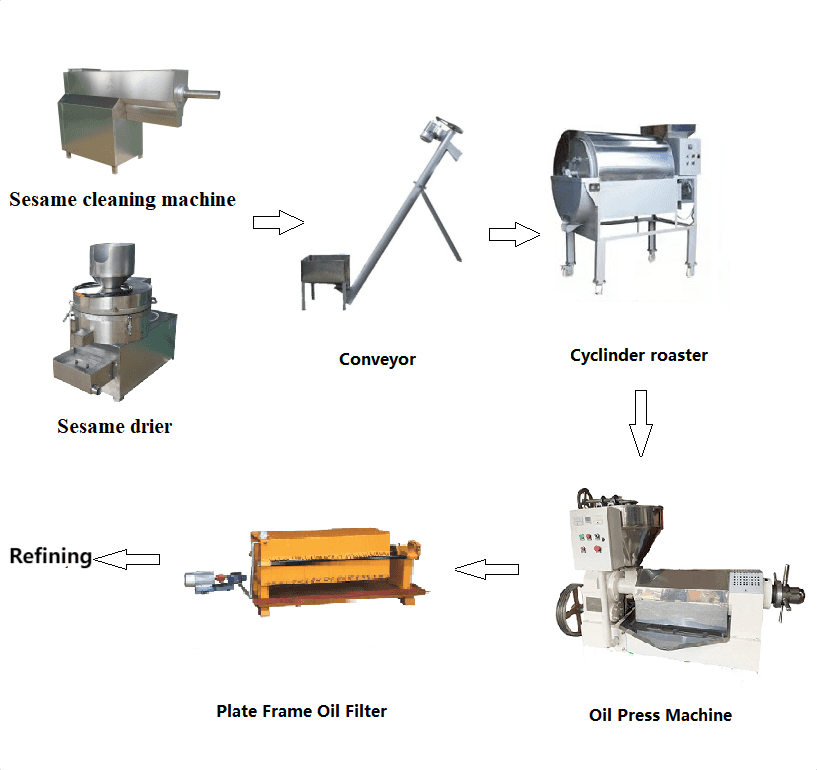

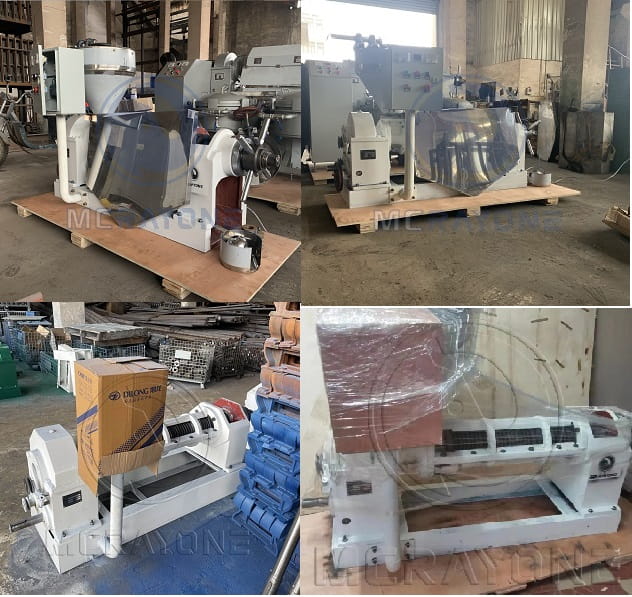
Pressing Process of Hydraulic Oil Press:
First, spread a textile bag on the appliance, put in an appropriate amount of sesame, pack the sesame into small bags (5 kg per bag is the most suitable), put the wrapped sesame into a special mold (mould There are many holes on it for oil flow, the mold should have a suitable thickness and can withstand a certain pressure), and each material layer should be separated by a thin iron sheet to facilitate the flow of oil between the material layers. Then pressurize, when the pressure rises to 4 MPa, the oil starts to flow out; when the pressure rises to 10 MPa, there is very little sesame oil flowing out, and the pressure can be released to discharge the material. The main point is that the smaller the bag, the higher the oil yield; the pressure should be raised less and more frequently, and the pressure should not be too high at one time, otherwise the oil will be sprayed out in a slurry form or the oil passage between the oil materials will be closed and contracted, and the oil yield will be reduced. Instead it fell.
During the whole oil production process, the sesame seeds are not heated, and there is no thermal denaturation.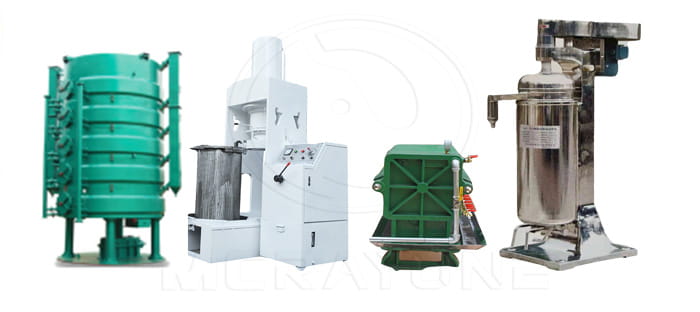


Filtration / Refining
Refrigeration unit
↓
Crude oil → clear oil tank → plate filter → cooling pan → storage tank settling → plate and frame filter → bag filter → first-grade sesame oil
Process Description
The filter oil is filtered at low temperature, and the temperature is lowered to 15~20°C to minimize the volatilization loss of fragrance. The new process of filtering, standing and filtering is adopted to fully filter out the phospholipids that are not easy to be hydrophilic, so as to reduce the content of phospholipids in the oil to the minimum level, so as to improve the stability of the storage period.
(1)The first filter.
Crude crude oil is pumped into the filter for filtration after initial slag removal in the oil tank, and the obtained primary filtered oil is pumped to the cooling pan, and after cooling to a certain temperature, it is pumped into the oil tank with cooling coils and refrigerated. .
(2)The second filter
The primary filtered oil is left to stand to further combine the easier-to-combine water-containing phospholipids, and the secondary filtration with strong water absorption separates the part of the phospholipids that have been polymerized to achieve the effect of filtration and polishing. It makes the oil have excellent transparency, improves the sensory index, and further improves the stability of the storage period. After the filtered oil is left to stand, it is filtered twice by a plate and frame filter to obtain the finished sesame oil.
